- Home
- Virginia Woolf
Between the Acts Page 3
Between the Acts Read online
Page 3
Djuna Barnes, Ladies Almanack; Radclyffe Hall, The Well of Loneliness; D. H. Lawrence, Lady Chatterley’s Lover; Evelyn Waugh, Decline and Fall; W B. Yeats, The Tower.
1929
A Room of One’s Own published. “Women and Fiction” in The Forum (New York).
Labour Party returned to power under Prime Minister MacDonald. Discovery of penicillin. Museum of Modern Art opens in New York. Wall Street crash.
William Faulkner, The Sound and the Fury; Ernest Hemingway, A Farewell to Arms; Nella Larsen, Passing.
1930
Woolf meets the pioneering composer, writer, and suffragette Ethel Smyth (1858–1944), with whom she forms a close friendship.
Death of D. H. Lawrence (b. 1885).
W H. Auden, Poems; T. S. Eliot, Ash Wednesday; William Faulkner, As I Lay Dying; Sigmund Freud, Civilisation and Its Discontents.
1931
The Waves is published. First of six articles by Woolf about London published in Good Housekeeping; “Introductory Letter” to Life As We Have Known It. Lectures to London branch of National Society for Women’s Service on “Professions for Women.” Meets John Lehmann (1907–1987), who will become a partner in the Hogarth Press.
Growing financial crisis throughout Europe and beginning of the Great Depression.
1932
The Common Reader, Second Series and “Letter to a Young Poet” published. Woolf invited to give the 1933 Clark Lectures at Cambridge, which she declines.
Death of Lytton Strachey (b. 1880).
Aldous Huxley, Brave New World.
1933
Flush: A Biography, published. The Woolfs travel by car to Italy.
Adolf Hitler becomes chancellor of Germany, establishing the totalitarian dictatorship of his National Socialist (Nazi) Party.
T. S. Eliot, The Use of Poetry and the Use of Criticism; George Orwell, Down and Out in Paris and London; Gertrude Stein, The Autobiography of Alice B. Toklas; Nathanael West, Miss Lonelyhearts; W B. Yeats, The Collected Poems.
1934
Woolf meets W B. Yeats at Ottoline Morrell’s house. Writes “Walter Sickert: A Conversation.”
George Duckworth dies. Roger Fry dies.
Samuel Beckett, More Pricks Than Kicks; Nancy Cunard, ed., Negro: An Anthology; F. Scott Fitzgerald, Tender Is the Night; Wyndham Lewis, Men Without Art; Henry Miller, Tropic of Cancer; Ezra Pound, ABC of Reading; Evelyn Waugh, A Handful of Dust.
1935
The Woolfs travel to Germany, where they accidentally get caught up in a parade for Göring. They return to England via Italy and France.
1936
Woolf reads “Am I a Snob?” to the Memoir Club, and publishes “Why Art Today Follows Politics” in the Daily Worker.
Death of George V, who is succeeded by Edward VIII, who then abdicates to marry Wallis Simpson. George VI becomes king. Spanish Civil War (1936–38) begins when General Franco, assisted by Germany and Italy, attacks the Republican government. BBC television begins.
Djuna Barnes, Nightwood; Charlie Chaplin, Modern Times (film); Aldous Huxley, Eyeless in Gaza; J. M. Keynes, The General Theory of Employment, Interest and Money; Rose Macaulay, Personal Pleasures; Margaret Mitchell, Gone with the Wind.
1937
The Years published. Woolf’s nephew Julian Bell killed in the Spanish Civil War.
Neville Chamberlain becomes prime minister.
Zora Neale Hurston, Their Eyes Were Watching God; David Jones, In Parenthesis; Pablo Picasso, Guernica; John Steinbeck, Of Mice and Men; J. R. R. Tolkien, The Hobbit.
1938
Three Guineas published.
Germany annexes Austria. Chamberlain negotiates the Munich Agreement (“Peace in our time”), ceding Czech territory to Hitler.
Samuel Beckett, Murphy; Elizabeth Bowen, The Death of the Heart; Jean-Paul Sartre, La Nausée.
1939
The Woolfs visit Sigmund Freud, living in exile in London having fled the Nazis. They move to Mecklenburgh Square.
Germany occupies Czechoslovakia; Italy occupies Albania; Russia makes a nonaggression pact with Germany. Germany invades Poland and war is declared by Britain and France on Germany, September 3. Deaths of W B. Yeats (b. 1865), Sigmund Freud (b. 1856), and Ford Madox Ford (b. 1873).
James Joyce, Finnegans Wake; John Steinbeck, The Grapes of Wrath; Nathanael West, The Day of the Locust.
1940
Roger Fry: A Biography published. “Thoughts on Peace in an Air Raid” in the New Republic. Woolf lectures on “The Leaning Tower” to the Workers Educational Association in Brighton.
The Battle of Britain leads to German night bombings of English cities. The Woolfs’ house at Mecklenburgh Square is severely damaged, as is their former house at Tavistock Square. Hogarth Press is moved out of London.
Ernest Hemingway, For Whom the Bell Tolls; Christina Stead, The Man Who Loved Children.
1941
Woolf drowns herself, March 28, in the River Ouse in Sussex. Between the Acts published in July.
Death of James Joyce (b. 1882).
Rebecca West, Black Lamb and Grey Falcon.
INTRODUCTION
BY MELBA CUDDY-KEANE
AN ENGLISH VILLAGE. A country house. A day, likely a Saturday, in June 1939. In the afternoon, the villagers will stage an amateur production on the lawn, depicting imagined scenes from English comedies (not tragedies) in the eras of Queen Elizabeth I, Queen Anne, Queen Victoria, and the present day. The scenario in this novel seems idyllic, until we remember that all this pleasantry occurs under the gathering storm clouds of imminent and cataclysmic war.
Virginia Woolf’s last novel, Between the Acts, turns on a fundamental incongruity, questioning the relation between everyday life in an English village and momentous events occurring simultaneously on the world’s stage. What does it mean, the novel asks, to hold a village festival when the country is on the brink of war? Giles Oliver, a member of the family that owns the country house, can barely repress his irritation with the genteel proceedings, given that Europe is “bristling with guns, poised with planes” across the narrow channel divide (37). The closeness of war further haunts the festivities in scraps of conversation about Jewish refugees (84) and the Germans (103), and at the performance’s end the closing speech is interrupted by a formation, presumably of fighter planes, flying low overhead (131). In holding their annual pageant, is the community then in denial? Or are they defending the way of life that war most threatens, forcing us to consider what, out of the destruction, not only could but should survive?
History itself cannot resolve such textual problems, but historical context can offer useful insights into related attitudes at the time. In a scrapbook maintained by a chapter of the Women’s Institute for the area around Rodmell, the village where Leonard and Virginia Woolf were living during World War II, someone has pasted a clipping so pertinent to these issues that it’s worth quoting in full:1
A friend who lived in southern England, describes the behaviour of the villagers when an air raid failed to interrupt the local garden fête in aid of the Red Cross. He writes: “We have two or three air raids most days and we had seven German bombers swoop a few feet over our roofs machine-gunning only six days before our fête—so we know something about the Blitzkrieg. But we held our fête on Saturday with stalls, side-shows, dancing on the lawn, and the acting of scenes from Twelfth Night under the old mulberry tree, which is a stone’s-throw from the path still called Princess Gap because Princess Elizabeth used to walk there when she stayed in our village in the days before she became Shakespeare’s Queen Elizabeth.2 So it was all very much in English order, and we felt quite secure with one foot in the sixteenth and the other in the twentieth century as we listened to the Rector’s wife and Tom and Dick and Joyce and Annie transformed under the mulberry tree into Olivia, Malvolio, Sir Toby, Maria. The sun shone from a clear sky and there were 250 of us sitting on the lawn. There were mothers with babies and there were about 20 or 30 children playing about and sometimes
getting mixed up with the actors. And then just when the Clown was singing ‘Come away, come away, death,’ the sirens began to wail. Not a soul moved; the play went on. I thought to myself that at least a mother or two would take her children off to shelter. But not a bit of it; they sat there and watched the children sprawling on the lawn as if Göring and his Luftwaffe were as unreal and innocuous as Malvolio.”
The clipping is labeled “from the New Statesman,” and it indeed appears in that periodical’s issue of August 31, 1940.3 The scrapbook moreover contains a photograph of a fête held in the garden of Charmes Cottage, Rodmell, in aid of the Red Cross, and lists a production of Twelfth Night as taking place at Charmes Cottage in 1940. Virginia Woolf’s diary entry for Monday, August 19 of that year records both German bombers and a “rehearsal,” and a letter she wrote to her friend Ethel Smyth dated September 11, 1940, describes a recent village play in strikingly similar terms: “We had a fête: also a village play. The sirens sounded in the middle. All the mothers sat stolid. I also admired that very much” (Letters 6: 430). It may not have been Virginia who wrote to the New Statesman (“not a bit of it” resembles Leonard’s style more than hers), but she clearly attended the performance and shared the letter writer’s views. The fête must have taken place on Saturday, August 24, 1940, during the most intense bombing period in the Battle of Britain, and when Woolf had written most of the first draft of Between the Acts. The conjunction marks an extraordinary life-art intersection: Woolf witnessed an event that paralleled the storyworld she had recently created, but taking place at a later date, after the outbreak of war. The actual fête cannot explain the fictional one, but it can at least suggest the significance Woolf attributed to such “ordinary” events. In her letter, Woolf’s admiration for the villagers is associated with her admiration for two friends (Vita Sackville-West and Rose Macaulay), both of whom were driving ambulances in areas under bombardment at the time. The courage and morale displayed by the Rodmell villagers was for her a similar contribution to the war effort in civilian terms.
The story of the Rodmell fête further reveals the relation between Woolf’s subject matter and what recent historians and literary critics term the “quotidian,” the everyday. Traditionally, prominence in history has been given to “grand events,” famous leaders, and critical turning points in the course of human affairs, but there is another compelling yet frequently unrecorded history concerning the processes of daily life. For Leonard Woolf, this untold story was the “back-stairs of history” (141); for Virginia Woolf, the “Lives of the Obscure,”4 or perhaps life “between the acts.”5 This approach focuses not only on “ordinary people” but more particularly on the small actions and passing thoughts of daily life. Following the theorist Michel de Certeau, recent criticism has often emphasized the potential empowerment of the quotidian, describing manifestations of resistance or outright subversion as oppositional to the direct power wielded by hegemonic and authoritative regimes. The descriptions of the Rodmell fête construct it as an act of heroic resistance in such terms. The everyday in Woolf’s fictional world, however, manifests a conceptual many-sidedness that is disturbingly more complex.
In Between the Acts, Woolf uses the surface triviality and circumscribed locality of the everyday to probe deeply into questions of the survival of the human race. The possibility of a positive reading of the festivities remains, but it is tested and subjected to multiple points of view. Cacophonous voices in the novel mix the trivial, the careless, and the nasty, with the yearning, vibrant, and indeed humorous qualities of ordinary life. The narratives of both past and present are infused with pettiness, infidelities, prejudice, greed, and a disturbing undercurrent of violence, yet they are driven as well by inventiveness, sensitivity, creativity, and a longing for meaningful connection. Because Woolf does not idealize her fictional world, the tone of the novel frequently turns satirical. Because she dwells on ordinary life with such precision and intensity, the novel challenges us—whoever and wherever we are—to extend compassion and comprehension, and to take from this world an understanding we might then apply to our own. For just as the pageant at its end turns its mirrors on the audience, so the novel as a whole turns its mirror toward us. “Did you feel,” asks old Mrs. Swithin, that “we act different parts but are the same?” “Yes,” Isa answers, and then “no.” “Yes, yes, yes, the tide rushed out embracing. No, no, no, it contracted” (146). Reading this novel enacts a similar vacillation between difference and similarity, as we alternately cast this fictional community as “them” or as “us.” Is this a story of one historically and geographically localizable culture, or is it the story of “ourselves”?
The novel is suffused with such rhythms of alternation, and it continually challenges its readers with the question of what these rhythms mean. Does Woolf present a society on the verge of extinction, with its history a sad tale of loss, both of meaningful relationships with one another and of a meaningful relationship with the land? Or does this spring pageant adumbrate a society revivifying its potentials for renewal and regeneration, trembling on the threshold of a future that could reform and transform its tarnished, yet nevertheless fertile, past? Or is it neither one nor the other of these stark polarities, but rather some third possibility, inhabiting a realm in between? The tide rushes in, then recedes, over and over again, shifting its answers between yes and no. Woolf’s skill in placing us on the razor’s edge in all our thinking may constitute the greatest power of this rich and haunting work.
History, Writing, and War
THE RODMELL fête reminds us of another historical narrative: the background story of Woolf’s writing this work. Her first vague jottings about a new novel date from August 1937, two years before the outbreak of World War II; she completed her last typescript of Between the Acts in February 1941, one-and-a-half years after the war began. The events in the novel, however, are set in June 1939, locating us in another razor’s-edge world—one of the last moments of peace before Britain and France declared war on Germany in September of that year. In the earliest typed draft of the novel, begun in April 1938, Woolf set the date in July of that year, moving it up to 1939 in her second draft, written in 1940 (a few months after the Rodmell fête), but significantly not moving it up, as she might then have done, to a point during the war. By depicting a prewar world for a wartorn audience, Woolf thus wrote a further irony into her work: the disparity between what her villagers suspect but don’t know and the outcome her first reading audience would know only too well. Deepening the novel’s layers, Woolf used the storyworld and the reading world to generate multiple times: Her readers would think about the future the villagers would soon confront; the same readers would also remember their own lives in that earlier, possibly still hopeful, world. We need today to remember that historical audience, since it is through them that we most feel the painful contrast between periods of war and peace.
History is thus a hidden collaborator in the writing of this text, and it plays a role in its final production, too. As Woolf’s last novel, Between the Acts inevitably suggests a summing up, conclusion, or culmination of her work. But it is, at the same time, a novel she left unfinished, lacking the final revisions she would have made, as always, while seeing a novel into print. It misses, even further, her endorsement of it as a publishable work. Despite her elation on finishing the typescript, she soon expressed concerns about its being “slight and sketchy” (Letters 6: 482) or “silly and trivial” (Letters 6: 484), and decided to withdraw it from the press. The shift from writing to anticipating critical reaction is difficult, and we might note that Woolf had expressed similar concerns about her previous—and actually well-received—novel The Years.6 In 1941, however, focusing on the everyday was an arguably greater risk. Since she chose not to cast her fictional world heroically, would its concerns not seem trivial in a time of war? And could a work of literature about literature be understood as relevant to the annihilation that threatened the European world? Not only do we lack what
some editors consider a “definitive text” because it was published after her death; the novel we have is embedded in the uncertainties that Woolf apparently felt. Yet there are details in the process of her writing this work that both reveal her excitement about it and indicate strongly why it mattered to her.
Virginia Woolf produced three different typescripts of this novel, the first two of which were edited by Mitchell Leaska and published in 1983 under the original title, Pointy Hall. Leaska named these first versions the Early Typescript, on which she worked until October 1940, and the Later Typescript, which she produced in October and November of that year. Woolf then produced what is known as the Final Typescript, which she completed on February 26, 1941, and it is this typescript, with her many inserted handwritten changes, that Leonard Woolf used when he published the novel after her death. In contrast to the impressively rapid production of the final two versions, the full span of her thinking and writing about the novel extended over some three and a half years. The development of the novel itself makes a fascinating study, but two aspects in particular are relevant here: first, the way the novel took shape in her mind as a kind of writing rather than as a subject about which to write; second, the way this particular kind of writing asserted for her a different system of values from the mentality that leads to war.
When Woolf first jotted down ideas for this novel in August 1937, they had nothing to do with plot. Her inspiration was all about “discourse”—the kind of writing it was to be: “Its to be dialogue: & poetry: & prose” (Diary 5: 105). She wanted to write a “new criticism” as well. In October of that year, she had a further intuition about form, imagining a story that would present “the statement of the theme: then the restatement: & so on: repeating the same story: singling out this & then that: until the central idea is stated” (Diary 5: 114). She went on to imagine a “concentrated small book” that would “contain many varieties of mood. And possibly criticism” (Diary 5: 114–15). We still find no mention of plot or theme, but her notes turn on two elements that prove crucial in the novel that evolved: the mixture of genres, and the multiple echoes of a unifying theme. By the time Woolf began the first typescript in April 1938, she had a country house setting clearly in mind: Poyntzet Hall (later Poyntz and finally Pointz Hall). The name suggests a tie to the colorful Poyntz family (see note to page 25), but more pertinently and playfully it juxtaposes points and all—multiplicity and totality, the many and the one. For that duality is now, in both her method and her subject, the articulated theme: “‘I’ rejected: ‘We’ substituted: to whom at the end there shall be an invocation? ‘We’ . . . composed of many different things . . . we all life, all art, all waifs & strays—a rambling capricious but somehow unified whole—the present state of my mind?” (Diary 5: 135). And what persists from her first intuition is the notion of a loose and hybrid style: The novel is to be “a perpetual variety & change from intensity to prose. & facts—& notes”; it will be “random and tentative,” allowing her to say “anything that comes into [her] head.”

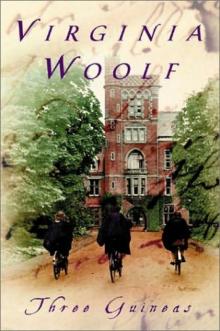 Three Guineas
Three Guineas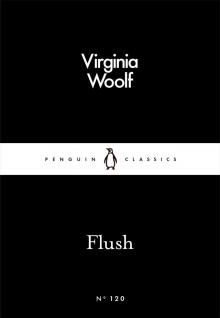 Flush
Flush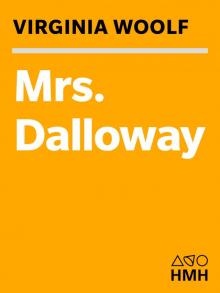 Mrs. Dalloway
Mrs. Dalloway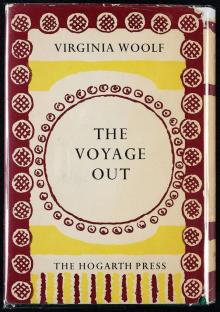 The Voyage Out
The Voyage Out A Writer's Diary: Being Extracts From the Diary of Virginia Woolf
A Writer's Diary: Being Extracts From the Diary of Virginia Woolf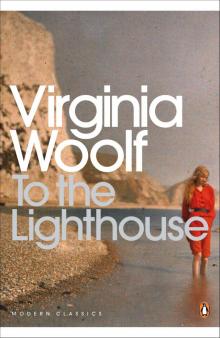 To The Lighthouse
To The Lighthouse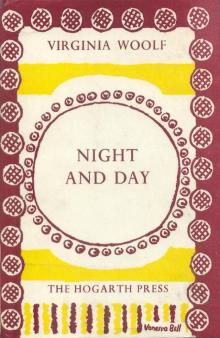 Night and Day
Night and Day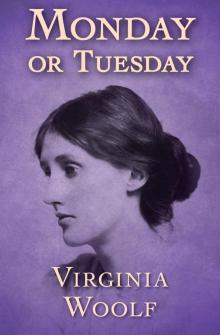 Monday or Tuesday
Monday or Tuesday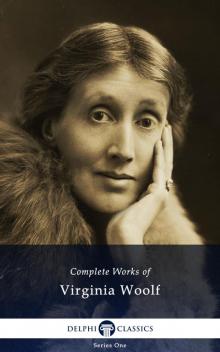 Complete Works of Virginia Woolf
Complete Works of Virginia Woolf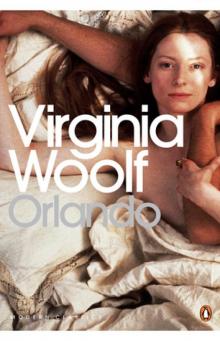 Orlando
Orlando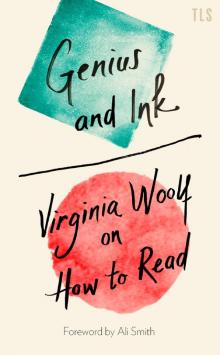 Genius and Ink
Genius and Ink Mrs. Dalloway (Annotated)
Mrs. Dalloway (Annotated)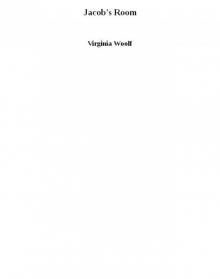 Jacob's Room
Jacob's Room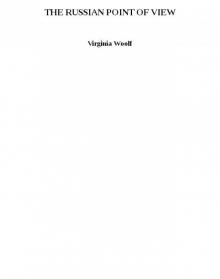 THE RUSSIAN POINT OF VIEW
THE RUSSIAN POINT OF VIEW A Writer's Diary
A Writer's Diary Woolf Short Stories
Woolf Short Stories